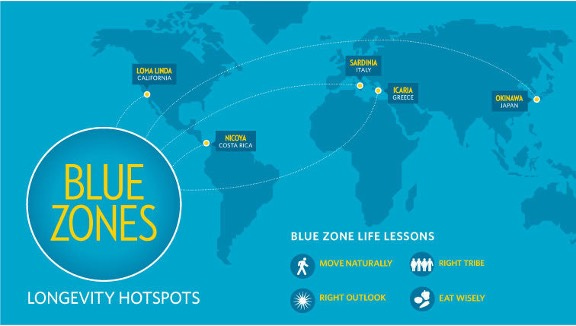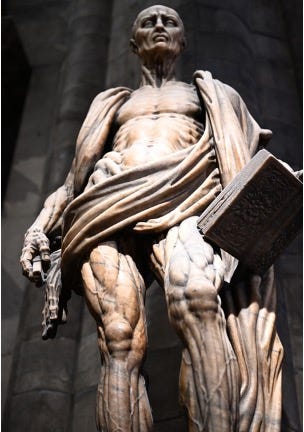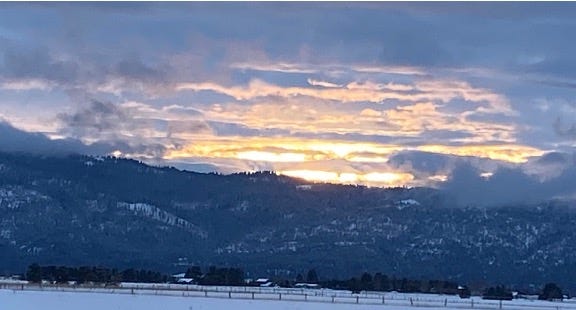The New Year’s celebrations are over. We have had a couple of weeks to see how our resolutions are working so far. Time to think about longer-term?
How old are you now? How long do you want to or intend to ski? When and how will you make that decision?
What a question? Has that question crossed your mind? Will it now? Or do you simply not think about questions of longevity?
What kind of condition are you in … physically, mentally, spiritually? What? I get you asking about my physical and mental state, but my spiritual state? What has my spiritual state have to do with how long I intend to ski? Or, more fundamentally, how long do I intend to live? And, the corollary, how do I intend to live my longevity, my quality of life?
I met a man aged 91 who typically skis about 120 days per season. Of course, he lives in a ski town and has done so for a couple of decades. His cliff jumping days are long, long past; now it’s green and blue runs with an occasional groomed black, and at a leisurely pace. I knew where to find him every day between 10 and 10:30 am, in the coffee shop at the top of the mountain enjoying his cappuccino and the brioche or croissant he baked himself at home and carried up the mountain. Always ready for meeting new skiers, conversation (especially about bread baking, his other passion), and great ski stories. Most days he skied off the mountain after lunch, often accompanied by friends, old and new, familiar with his ritual. There was usually a member of the Ski Patrol in the downhill fraternity; all genuinely honoring a local mountain legend. Is this your aspiration or will you one day just decide no more and quietly sell your skis?
Online you can find lists of perspectives, factors, characteristics, conditions, opinions, and more about longevity, … good, bad, relevant, irrelevant, and … ??? Some of the online data is based on research, some simple conjecture, some opinion, and everything in between. Here’s a non-exhaustive, illustrative, referential list in alphabetical order; education, environment, ethnicity/migrant status, gender, genetics, karma, lifestyle, marital status, medical technology, prenatal and childhood conditions, socio-economic status, spirituality … whew, is that enough to think about?
The same combination of genetic, environmental and lifestyle factors that determine lifespan determine our health and, consequently, how long we can ski. As we age, health gradually declines, we lose physical functionality, and our propensity for developing and dying from age-related disease like diabetes, cardiovascular disease and cancer increases. We have the ability to extend our vital life-span and reduce the manifest effects of aging with our attitudes, knowledge and lifestyle.
Michel Poulain, a demographer at the Université Catholique de Louvain in Belgium, and Giovanni Mario Pes, MD, a Sardinian physician at the University of Sassari in Italy, found Sardinia to have the highest concentration of male centenarians in the world. Digging deeper, they found these centenarians were not spread uniformly across Sardinia, but concentrated in a few villages. Pes and Poulain drew concentric circles around these villages of extreme longevity on a map and started referring to the center of these circles as “blue zones.” Why “blue zones,” “because it was the only color pen I had at the time.”
Poulain, M, G. Pes, C. Grasland, et al, “Identification of a geographic area characterized by extreme longevity in the Sardinia island: the AKEA study,” Exp Gerontol. 39(9):1423-1429 (2004). doi:10.1016/j.exger.2004.06.016
Based on the work of Pes and Poulain, Dan Buettner, world explorer, National Geographic Fellow, and multiple New York Times bestselling author, assembled a team of geographers and researchers to identify other places in the world where people experience extreme longevity, other “blue zones.” The team identified four other “blue zone;” the islands of Okinawa, Japan, the Nicoya Peninsula in Costa Rica, Icaria, Greece, and Loma Linda in the US. Buettner’s team’s worldwide search is chronicled in The Blue Zones, Second Edition: 9 Lessons for Living Longer From the People Who've Lived the Longest (The National Geographic, 2012).
Having identified “blue zones,” Buettner and his team turned their attention to identifying whether the people living in “blue zones” shared common characteristics and attributes even though geographically disperse. They found that residents of “blue zones” share nine specific traits, lifestyle habits, which they termed the Power 9.
The nine lifestyle traits comprise four regimes; physical, mental, social, and diet.
The physical regime is termed “move naturally,” which means embody movement in your daily activities. You do not have to go to the gym or run in a 10k. Rather, take movement breaks in your daily routine, go for a walk, do some squats, lift those ski boots over your head, tend your garden … you get the idea.
The mental regime is to have the “right outlook.” Attitude and motivation are the hallmarks here; attitudes and motivation about life and how you choose to live it. You make the choice to come to the mountain; do you focus on the mountain experience … the snow, the physical exertion, the social relationships? Do you use your mountain time to destress? Do you carry that mountain feeling back to your non-skiing life?
The social regime is about connections … family, friends, life-partners, tribe members, ethereal relationships. What do you believe? What connections are important to you? We each have to navigate the mountain by ourselves, but we are most comfortable doing so with family, friends, and sometimes with another skier or boarder we have just met. Skiing and boarding are inherently social activities.
The diet regime is “eat wisely,” the primary topic of my blog. Eating wisely requires you make food choices in a difficult environment. The dominant industrial agriculture processed food is not healthy and does not contribute to wellbeing. A Mediterranean diet reflects the “blue zone” recommendations; how much we eat and portion sizes also matter (120-170 grams, 4-6 oz. is the sweet spot). The admonition, “don’t eat anything your grandmother would not recognize as food” is wisely adhered to … organic, non-GMO vegetables and fruits, 100 percent pasture raised meats. Of course, the “wine at 5” with family, friends and food is adhered to readily and easily (only drink great wine!).
The ”blue zone” research has articulated lifestyle traits supporting longevity. What measurable indicators has research shown to be predictors of longevity with reasonable accuracy? We are talking about observable indicators, which may or may not be malleable. In other words, while you can act to influence the observable indicator, such action may or may not affect longevity. Here are a few commonly discussed indicators (that does not mean they are widely accepted).
Handgrip strength consistently predicts mortality risk from all causes in middle-age and elderly people. Poor grip strength is an independent indicator for type 2 diabetes. Carrying your boots and skis is a pretty good macro indicator for longevity. You can work on your grip strength; squeeze a tennis ball or get a hand grip strength trainer.
People who naturally walk the fastest tend to demonstrate a lower mortality risk than slow walkers. Rapid declines in natural walking speed sometimes indicate issues to be addressed. Some clinicians use walking speed as a “sixth vital sign.” The research supporting this indicator is based on natural walking speed, but here too it seems that you can consciously alter the way you walk to your benefit.
Several studies indicate that the perceived “age of the face” is a better predictor of mortality risk than objective health markers, actual age, or cognitive function. More objective measurements of aesthetic age, like wrinkling in areas unexposed to the sun, also predict longevity. Sorry, plastic surgery does not count.
Dykiert, D, T. Bates, A. Gow, L. Penke, J. Starr, and I. Deary, “Predicting mortality from human faces,” Psychosom Med. 74(6):560-566 (2012). doi:10.1097/PSY.0b013e318259c33f
If you are happy with your physical and psychological health, social relationships, and your immediate environment, you may live longer. Having a poor opinion of your current lot in life may have the opposite effect. Even when those subjective opinions are compared to objective measurements of your health, your relationships and your environment, subjective outlook is a better predictor of lifespan. How much does the mountain experience influence your outlook?
Murray, C, C. Brett, J. Starr, and I. Deary, “Which aspects of subjectively reported quality of life are important in predicting mortality beyond known risk factors? The Lothian Birth Cohort 1921 Study,” Qual Life Res. 20(1):81-90 (2011). doi:10.1007/s11136-010-9718-1
Lean muscle mass is a commonly discussed predictor of longevity. Skeletal muscles produce protein and metabolites that regulate recovery from trauma and injury; the more you have the better and quicker you will recover. The statue of St. Bartholomew “skinned” in the Milan Duomo graphically illustrates skeletal musculature. Sculptor Marco d’Agrate created this statue of one of Christ’s twelve apostles in 1562.
"It is well known that aerobic fitness is strongly related to survival," Claudio Gil Soares de Araújo, a professor at Gama Filho University in Rio de Janeiro, Brazil, has said, "but our study also shows that maintaining high levels of body flexibility, muscle strength, and coordination also has a favorable influence on life expectancy." Here’s a simple test to grasp if not do: Just sit on the floor from a standing position without using your hands, arms, or knees to slow your descent. Then stand back up—without using your hands, arms, or knees to help boost you back up, if possible. (Hint: Crossing your legs on the way down and the way up seems to help, and loosely holding your arms out to your sides can help with balance.) Musculoskeletal fitness, it turns out, is a very important determinant of longevity.
Brito, L, D. Ricardo, D. Araújo, P. Ramos, J. Myers, and C. Araújo, “Ability to sit and rise from the floor as a predictor of all-cause mortality,” Eur J Prev Cardiol. 21(7):892-898 (2014). doi:10.1177/2047487312471759
Living a purposeful life is associated with better mental and physical health, including longevity. Having something to live for helps you live longer with a lower disease burden. Life purpose predicts allostatic load, another way of saying “age-related wear and tear.”
Zilioli, S, R. Slatcher, A. Ong, and T. Gruenewald TL, “Purpose in life predicts allostatic load ten years later,” J Psychosom Res. 79(5):451-457 (2015). doi:10.1016/j.jpsychores.2015.09.013
“Large epidemiological studies of almost an entire population in Scotland have found that intelligence (as measured by an IQ-type test) in childhood predicts substantial differences in adult morbidity and mortality, including deaths from cancers and cardiovascular diseases. These relations remain significant after controlling for socioeconomic variables. One possible, partial explanation of these results is that intelligence enhances individuals’ care of their own health because it represents learning, reasoning, and problem-solving skills useful in preventing chronic disease and accidental injury and in adhering to complex treatment regimens.”
Gottfredson, L. and I. Deary, “Intelligence Predicts Health and Longevity, but Why?” Curr. Directions Psychol. Sci, 13.1-4 (2004). doi :10.1111/j.0963-7214.2004.01301001.x.
Autophagy is cellular maintenance; it is how our cells recycle waste material, eliminate inefficiencies, and repair themselves. “Aging” only occurs when cellular autophagy fails, or reduces. Autophagy is positively triggered by fasting, ketosis, calorie restriction, and exercise. To enhance longevity eat less, exercise more.
Emanuele, E, P. Minoretti, F. Sanchis-Gomar, et al., “Can enhanced autophagy be associated with human longevity? Serum levels of the autophagy biomarker beclin-1 are increased in healthy centenarians,” Rejuvenation Res. 17(6):518-524 (2014). doi:10.1089/rej.2014.1607
Whew! That’s a ton about longevity, including some measures you can take to increase your health and longevity, and your ability to ski better and longer.
Back to where this discussion started, how long do you want to ski and what are you going to do to make sure you reach your goal? How about starting with attitude, diet and exercise. Use your mountain experiences throughout your life.









Thank you for reading and for trying. Moving from sitting to standing without hands is hard, very hard. However, what’s most important to me is your determination to ski until 90 (why not beyond?), and your willingness to try the movement. Good luck, and best wishes for a great Thanksgiving. No skiable snow here yet.
I’m going to have to try that sitting to standing without hands, not sure is I can?, hoping to ski to age 90. Let’s get moving, snd thanks for sharing your wisdom